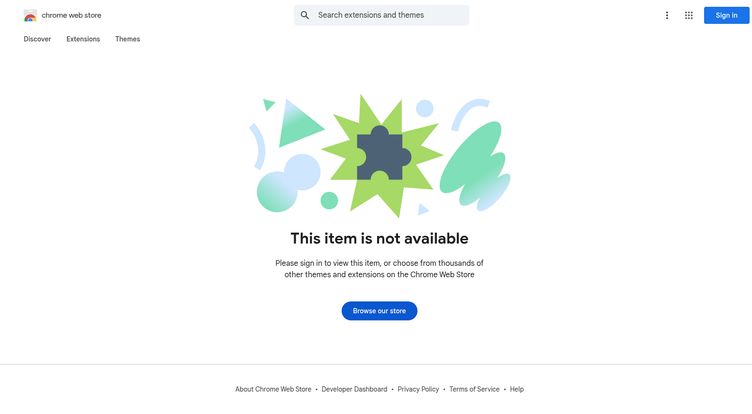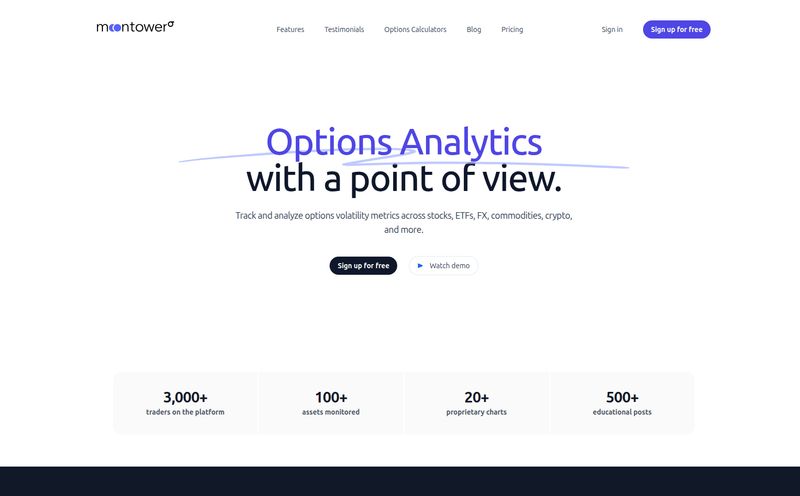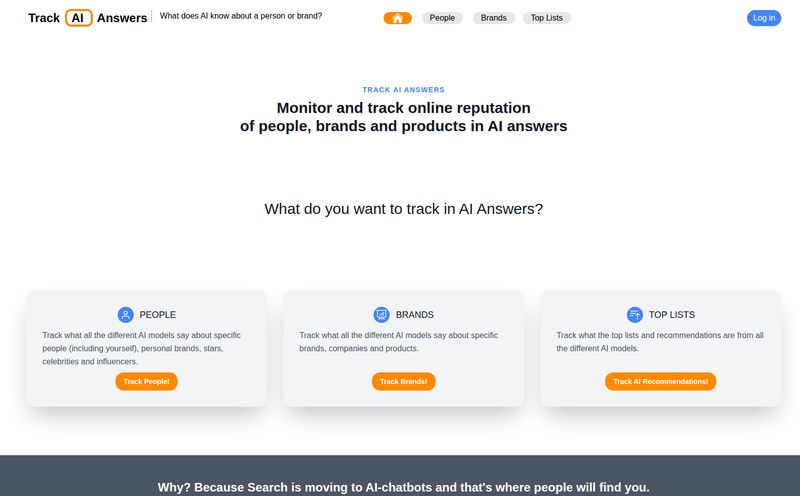Let’s have a little chat about our inboxes. If you're anything like me, your Gmail is a wild, untamed beast. It’s a constant stream of client updates, team questions, newsletters you swore you’d read, and that one notification from a social media platform you haven't used since 2018. Taming this beast is a daily battle, and honestly, some days I feel like I'm losing. Badly.
So, when a new AI tool promising to slay the email dragon pops up, my ears perk up. I’ve been in the SEO and digital marketing game for years, and I’ve seen countless “productivity hacks.” Most are just digital snake oil. But every now and then, something genuinely interesting comes along. That’s how I felt when I first heard about MailBuddy.
The premise was simple, almost elegant: a GPT-4 powered Chrome extension that writes email replies for you. For free. It sounded like the perfect little co-pilot for navigating the daily email grind. But here’s the twist in our little story… when I went to grab it from the Chrome Web Store recently, I was met with a digital dead end: “This item is not available.”
So what happened? Let's dig into what MailBuddy promised, what it did right, and why it might have vanished into the digital ether.
What Exactly Was MailBuddy Supposed to Do?
At its core, MailBuddy was an AI email assistant designed to live right inside your Gmail. You'd open an email, and instead of sighing and cracking your knuckles to type out a reply, you could just give MailBuddy a little nudge. It used the power of OpenAI's GPT-4—the same brain behind the more advanced versions of ChatGPT—to analyze the email you received and draft a context-aware response.

Visit MailBuddy
The real magic was in the direction you could give it. You could tell it, “write a polite decline,” or “accept this enthusiastically,” or even “write a funny, informal response.” It was like having a tiny, incredibly fast intern who never needed a coffee break. You’d get a draft in seconds, give it a quick once-over, maybe tweak a word or two, and hit send. The dream, right?
The Good Stuff: Why MailBuddy Caught My Eye
I get pitched a lot of tools, and most are forgettable. But MailBuddy had a few things going for it that made it stand out from the crowd.
First and foremost, it was a huge timesaver. We all have those emails that need a reply but don't require a novel. The quick confirmations, the simple thank-yous, the “got it, will look into this” messages. MailBuddy was built for exactly that. It turned a two-minute task into a ten-second one. Multiply that by 20 emails a day, and you’re getting a serious chunk of your life back.
I also really appreciated its simplicity. It integrated directly into the Gmail interface, so there was no new platform to learn. No weird dashboards or clunky pop-ups. It just… worked. And the ability to tweak the tone was brilliant. Replying to a long-time client is different from replying to a cold outreach email, and MailBuddy seemed to get that. And let's not forget the best part: it was free. No strings, no credit card, no weird trial period. Plus, it claimed it didn't require an account or hoard your personal data, which is a big green flag in my book.
Let's Be Real: The Not-So-Good Stuff
Of course, no tool is perfect. And MailBuddy had its limitations, even when it was available. For one, it was a Chrome-only extension. If you’re a die-hard Firefox or Safari user, you were out of luck. That’s a fairly common thing for these kinds of tools, but still a bummer for a chunk of the population.
A bigger limitation, in my opinion, was that it only worked for replies. You couldn't use it to compose a brand new email from scratch. This makes sense from a technical perspective—it needs the original email for context—but it does cut its usefulness in half. I often find the blank page of a new email more daunting than a reply.
“And here’s the universal truth of all AI writing tools right now: you still need a human in the loop. The responses, while good, could sometimes sound a bit… robotic. Or they might miss a subtle piece of nuance. You absolutely had to proofread before sending, or risk looking silly.”
Relying on AI without a final human check is like letting a toddler cook dinner. The intention is good, but you might end up with crayons in your casserole. You still had to be the final editor, which is a rule I live by for any AI-generated content, whether it's for an email or a blog post.
The Big Question: Where Did MailBuddy Go?
This is the million-dollar question, isn't it? One day it's a promising tool, the next it's a 404 page on the Chrome Web Store. I don’t have a secret inside source, but in my experience, things like this usually happen for a few reasons:
- Acquisition: A bigger company might have bought the tech and the developer, absorbing it into their own product. We might see MailBuddy’s features pop up in a larger CRM or productivity suite down the line.
- Unsustainable Model: Running a tool powered by GPT-4 costs money. A lot of money. Offering it for free is great for users, but terrible for the developer's wallet. It's possible the running costs just got too high to sustain as a free project.
- Rebranding: It could be relaunching under a new name with a new business model (i.e., not free anymore).
- Compliance Issues: Sometimes, a tool gets pulled by Google for violating a term of service, though that's usually accompanied by more drama.
My gut tells me it was likely a passion project that either got too expensive to run for free or was quietly acquired. The AI gold rush is real, and small, clever tools like this are prime targets.
Don't Despair! MailBuddy Alternatives Are Everywhere
The good news is that the idea behind MailBuddy is not unique. The AI email assistant space is exploding. If you were excited by the prospect of an AI co-pilot for your inbox, you still have plenty of options to explore on the Chrome Web Store.
Just looking at the store, you'll find a whole category of “AI Models” and tools that “Work with Gmail.” Extensions like HIX.AI, MaxAI.me, and even larger suites like Grammarly are incorporating AI-powered writing and reply features. Many of these offer similar functionality to what MailBuddy did, and some even go further, helping you compose new emails and offering more complex integrations.
The trade-off? Most of the really powerful ones aren't completely free. They usually operate on a freemium model, where you get a certain number of free actions per day or week, with a subscription to unlock unlimited use. It’s the price you pay for a more sustainable and feature-rich product.
The Final Word on AI Email Helpers
The story of MailBuddy is a perfect snapshot of the current AI landscape: incredibly exciting, full of powerful tools, but also a bit chaotic and unpredictable. Tools can appear overnight and vanish just as quickly.
For me, the takeaway isn't to mourn the loss of one specific tool. It's to embrace the concept. Using AI to handle the monotonous parts of my day, like clearing out low-priority emails, is a genuine game-changer. It frees up mental energy for the tasks that actually require human creativity and strategic thought—like crafting a killer SEO strategy or writing a blog post, for instance.
So, while MailBuddy may be a digital ghost for now, its spirit lives on in a dozen other tools. Go find one that works for you. Just, please, for the love of all that is holy, proofread before you send.
Frequently Asked Questions about MailBuddy
- 1. What was MailBuddy?
- MailBuddy was a free Chrome extension that used GPT-4 AI to help users write replies to their emails within Gmail. It could generate responses in various tones like formal, polite, or funny based on the user's instructions.
- 2. Why can't I find MailBuddy on the Chrome Web Store?
- Currently, MailBuddy is listed as unavailable on the Chrome Web Store. The exact reason isn't public, but it could be due to the developer taking it down, an acquisition by another company, or a plan to rebrand and relaunch it later.
- 3. Was MailBuddy free to use?
- Yes, one of its main attractions was that it was completely free to use. It also claimed not to require a user account or store personal data, which was a significant plus for privacy-conscious users.
- 4. Did MailBuddy work with emails other than Gmail?
- No, it was designed specifically as a Google Chrome extension that integrated directly with the Gmail interface. It did not work with other email clients like Outlook or Apple Mail.
- 5. Are there good alternatives to MailBuddy?
- Absolutely. The market for AI email assistants is growing rapidly. You can find several powerful alternatives on the Chrome Web Store, such as HIX.AI, MaxAI.me, and the AI features within Grammarly. Many of these offer more features than MailBuddy did, though they often operate on a paid or freemium model.
- 6. Is it safe to use AI for writing emails?
- Generally, yes, but with a major caveat: always review and edit the AI-generated text. AI can sometimes misinterpret context or generate text that is factually incorrect or tonally inappropriate. Treat it as a first-draft assistant, not a final-draft author.
Reference and Sources
- Google Chrome Web Store - For exploring current AI extensions and alternatives.



